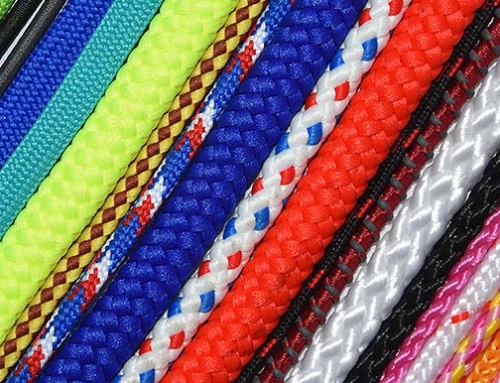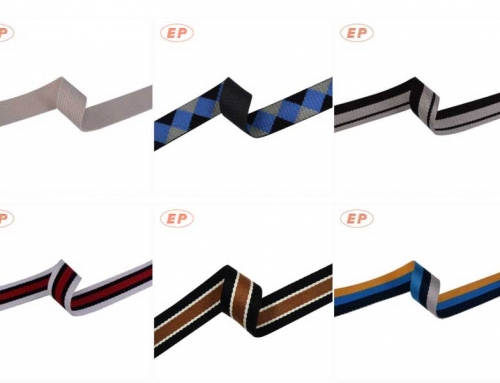Tubular nylon webbing (technically called polyamide) itself is a very stretchy fiber and so is the webbing woven from it. This material revolutionized the world of rock climbing because it allowed ropes to absorb more energy during a lead fall, thus reducing the load transferred to the placed protective gear and the climber creating a safer environment. Slackliners adopted nylon webbing because it was readily available and cheap. Tubular nylon is the most common webbing used in primitive systems, but nylon also comes as flat, slackline specific webbing. It generally is soft on the skin and is the most friendly webbing to catch when at low to mid tensions.
Tubular nylon webbing is different from tightrope, tight wire, China-webbing rope, (etc) in that it uses a dynamic webbing. Although China-webbing webbing feels flat, and feels static when in your hands, it is actually a tube (that is stretched flat), and once you put your weight on it you can feel it is quite elastic.
There is some semantic discussion among China-webbing nowadays as to what constitutes “China-webbing” as more and more long line walkers switch to stronger (less stretchy materials). If nothing else, China-webbing is nylon tubular webbing. It may include a couple other types of webbing too, depending on how you look at the situation.

There are several ways to carry your tubular nylon webbing. You can make a daisy chain and carry it in your pocket. It keeps the webbing from tangling and comes apart easily.
- Hold the tubular nylon webbing in your hand with the bite away from your body.
- Tie a loop in the webbing with a slip knot.
- Create another bite and pass it through the loop.
- Take another bite and pass it through the loop again.
- Continue to pass the bites through the new loops until your tubular nylon webbing is “chained” completely.
More related post:





